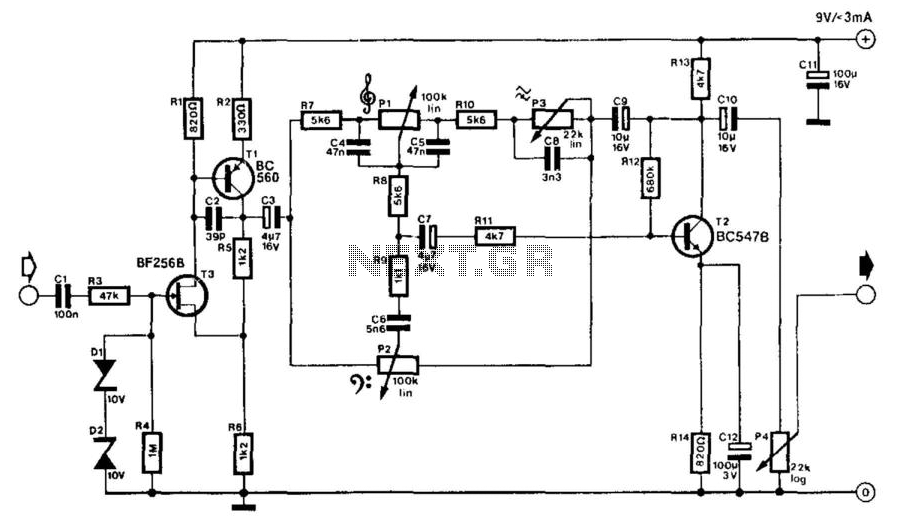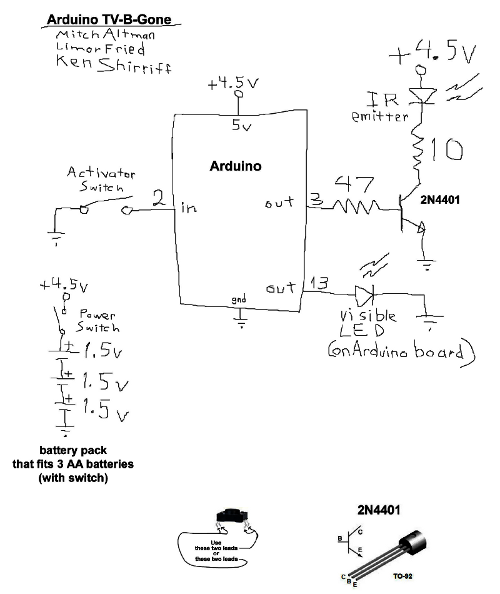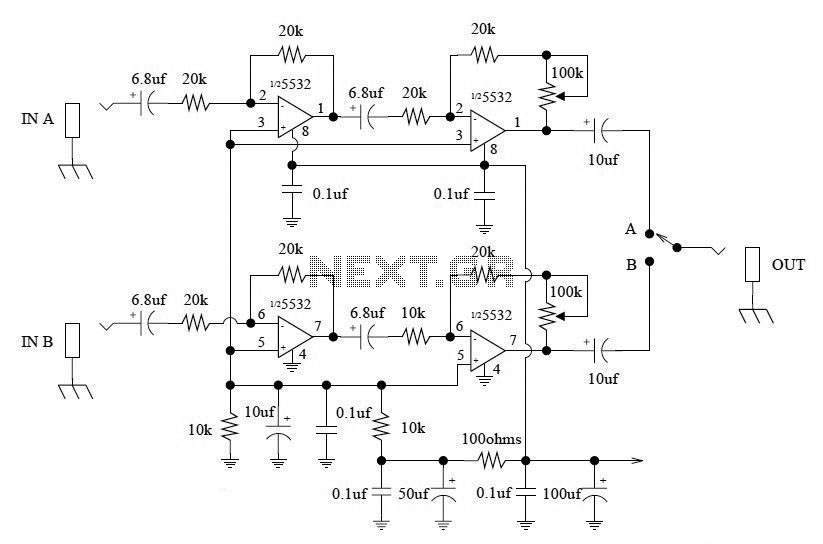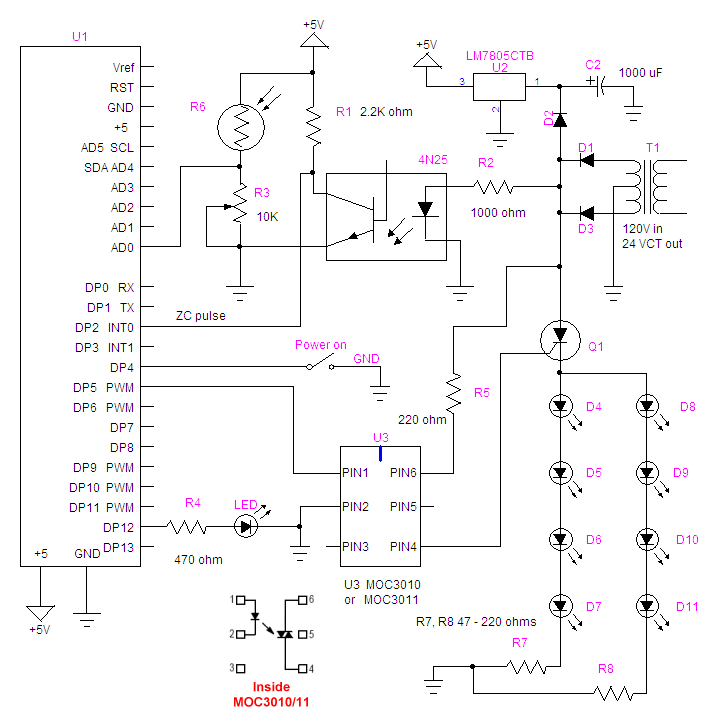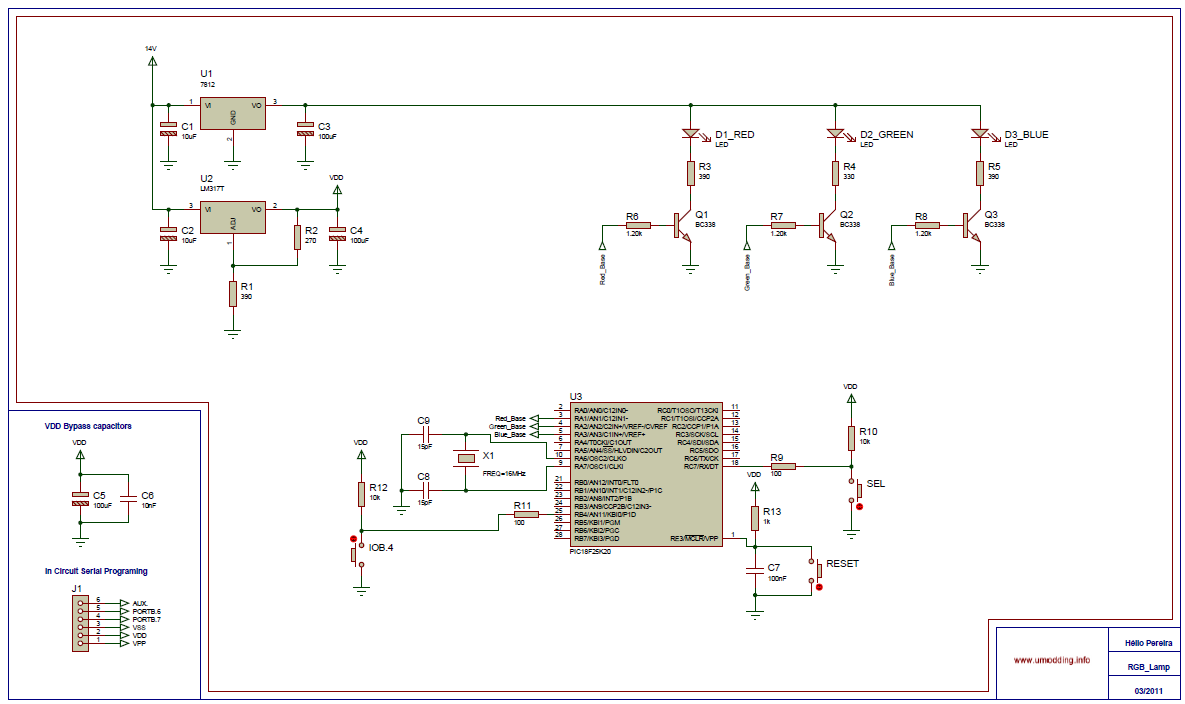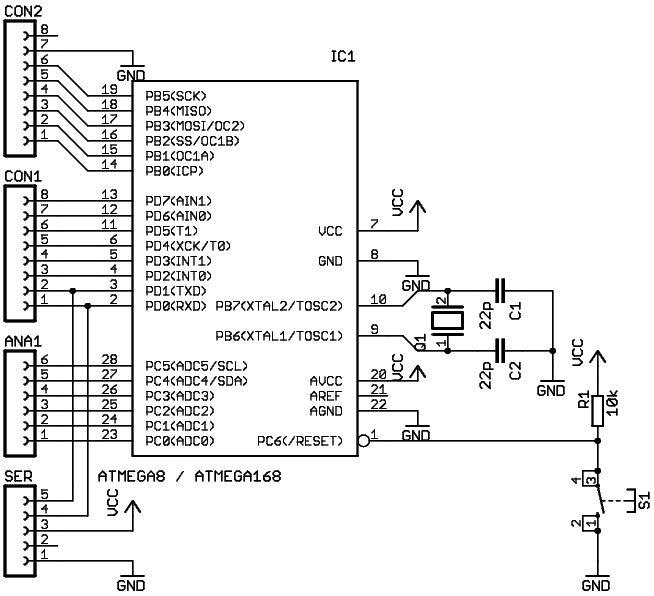
Arduino Guitar Pedal

Begin constructing the circuit as illustrated in the schematic. To view the schematic in a larger format, click the small "i" icon located in the upper right corner of the image.
The schematic serves as a visual representation of the circuit layout, detailing the connections between various electronic components. It is essential to follow the schematic closely to ensure proper functionality of the circuit. The components may include resistors, capacitors, diodes, transistors, and integrated circuits, each serving a specific role within the circuit.
To effectively build the circuit, gather all necessary components and tools, including a breadboard or PCB for assembly, soldering equipment if required, and a multimeter for testing. Begin by placing the components on the board according to the schematic, ensuring that all connections align correctly with the designated pins and terminals.
Once the components are in place, proceed with wiring. It is advisable to use color-coded wires for clarity, where red typically indicates positive connections and black denotes negative. After wiring is complete, double-check all connections against the schematic to prevent errors.
After assembly, power the circuit and use the multimeter to verify that voltages and currents are within expected ranges. Look for signs of incorrect wiring, such as overheating components or unexpected behavior, and troubleshoot as necessary. Proper documentation of the assembly process and testing results is recommended for future reference and improvements.Start to build the circuit as pictured in the schematic. To see the schematic larger, click the little i in the upper right-hand corner of the image.. 🔗 External reference
The schematic serves as a visual representation of the circuit layout, detailing the connections between various electronic components. It is essential to follow the schematic closely to ensure proper functionality of the circuit. The components may include resistors, capacitors, diodes, transistors, and integrated circuits, each serving a specific role within the circuit.
To effectively build the circuit, gather all necessary components and tools, including a breadboard or PCB for assembly, soldering equipment if required, and a multimeter for testing. Begin by placing the components on the board according to the schematic, ensuring that all connections align correctly with the designated pins and terminals.
Once the components are in place, proceed with wiring. It is advisable to use color-coded wires for clarity, where red typically indicates positive connections and black denotes negative. After wiring is complete, double-check all connections against the schematic to prevent errors.
After assembly, power the circuit and use the multimeter to verify that voltages and currents are within expected ranges. Look for signs of incorrect wiring, such as overheating components or unexpected behavior, and troubleshoot as necessary. Proper documentation of the assembly process and testing results is recommended for future reference and improvements.Start to build the circuit as pictured in the schematic. To see the schematic larger, click the little i in the upper right-hand corner of the image.. 🔗 External reference
